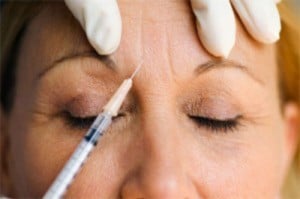Seek treatment for hair loss by visiting a professional hair care expert.
Seek treatment for hair loss by visiting a professional hair care expert.
Blog Article
Navigating Skin Cancer Treatment: The Vital Function of Mohs in Modern Dermatology Practices
Skin cancer cells, a complicated medical diagnosis, often leaves clients coming to grips with numerous treatment choices. Amongst these, Mohs surgery stands as a sign in modern-day dermatology, renowned for its precise strategy to cancer cells elimination and preservation of surrounding healthy tissue. This innovative method assures not only exceptional cosmetic outcomes yet additionally provides immediate outcomes, relieving individual anxiousness. As we check out the complexities of this procedure, one will appreciate its crucial function in skin cancer cells treatment.
Comprehending Skin Cancer Cells: Kinds and Risks
There are three main kinds of skin cancer cells: Basic cell cancer, Squamous cell cancer, and Melanoma. It accounts for just about 1% of skin cancer cells instances but triggers the substantial bulk of skin cancer deaths. Threat variables include fair skin, history of sunburn, extreme sun direct exposure, living at high elevations or shut to the equator, having many moles, a household history of skin cancer, and damaged immune system.
What Is Mohs Surgical procedure and Just How It's Changing Skin Cancer Treatment
In spite of the countless treatments currently readily available for skin cancer, Mohs surgical procedure stands out as a groundbreaking and highly efficient remedy. Named after Frederic E. Mohs, the doctor that developed the treatment, Mohs surgical procedure is a precise surgical method made use of to deal with skin cancer cells. This level of precision, integrated with the capability to spare as much healthy and balanced cells as feasible, is changing skin cancer treatment.
The Advantages of Mohs Surgical Treatment Over Standard Skin Cancer Cells Therapies
Structure on the ingenious nature of Mohs surgical procedure, it's essential to consider its various advantages over traditional skin cancer treatments. Unlike guidelines, Mohs offers a higher cure rate, typically reaching 99% for novice treatments and 94% for frequent cancers cells. This accuracy is because of its unique technique of progressively eliminating and taking a look at tissue layers until just cancer-free cells stay (skin cancer). Additionally, it decreases damages to healthy skin, leading to much less scarring and improved aesthetic results. Mohs also gives instant results, removing the anxiety-ridden wait usual with other methods. It's cost-effective, as the surgical treatment and microscopic assessment happen simultaneously, removing the requirement for additional research laboratory services. Thus, Mohs stands for a considerable improvement in dermatological techniques.
The Treatment of Mohs Surgical Procedure: What to Expect During the Refine

Prospective Side Effects and Post-Operative Treatment of Mohs Surgery
Undertaking Mohs surgery, like any type of various other procedure, involves possible negative effects that individuals need to be aware of. Typical side results include discomfort, wounding, and swelling at the surgery site. These are usually short-term and workable with non-prescription discomfort medication and ice packs. In rare situations, individuals might experience infection, bleeding, or an allergy to the anesthetic. Post-operative treatment is crucial to healing and lessening negative effects. This typically involves keeping the wound tidy and completely dry, taking recommended drugs, and avoiding difficult tasks. Individuals need to additionally attend all follow-up visits for injury treatment and monitoring. In some instances, additional therapies might be needed to make certain complete removal of the malignant cells. Following these view it now post-operative treatment standards can greatly enhance recovery and results.
Conclusion

Report this page